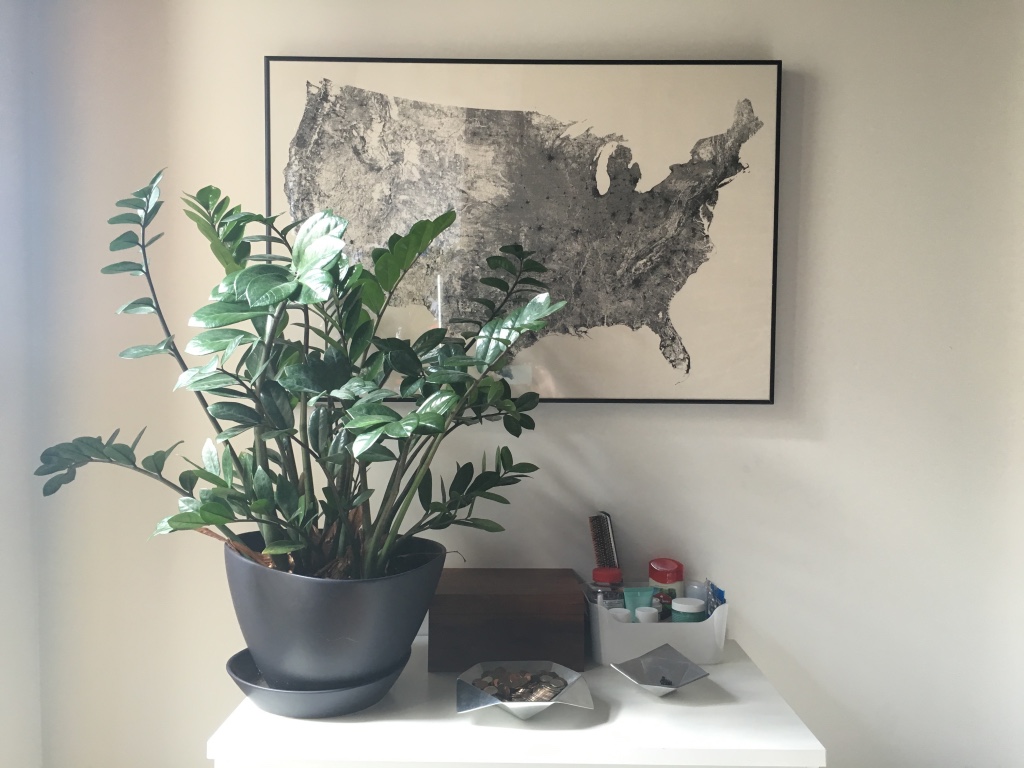This post was prompted by Jonathan Lethem’s “The Ecstasy of Influence: A Plagiarism” and Kirby Ferguson’s “Everything is a Remix” TedTalk. Evidence of their ideas seemed to spring up everywhere over the past few days.
In a lecture entitled “Ultraconcentrated: Image, Media, Software” given at the International Centre for Photography, Casey Reas discussed his software-based collage work. His work from the past four years draws from mass media for source material – whether that be social media profiles, broadcast signals, or photographs from newspapers. This original content is often transformed into continuous generative collages. Yet in looking (and listening) to the finished work, the original media sources are abstract, largely unrecognizable. Faces are reduced to single-color pixelized layers; public television transmissions are extracted, amplified and stochastically looped; the onslaught of front-page news imagery forms ribbons of abstracted color and form. By blurring the original content, the work pushes viewers to question its influence on our lives. Has mass media become a latent undercurrent that we unquestionably ‘move through’? Do we interpret the images and video ourselves, or do we blindly and willingly accept the subjectivity of the producer?
Reminiscent of Reas’ visually layered work, Girl Talk layers audio track upon audio track to build up an entirely new musical piece. And while Reas’ work may abstract the original content beyond recognition, the original samples used by Girl Talk are instantly recognizable. The original content: the musical notes and instruments, the lyrics, the artist’s voice remain unmodified. Yet the point of difference between the ’original’ audio and the ’sampled’ audio is context. In cutting various clips together, he creates relationships between sounds that weren’t originally juxtaposed. In scrolling though the composited track list for All Day or watching the visual timeline by Matt Adereth, it’s evident where samples overlap, break apart or give way to each other. Inevitably the lack of modification to the original samples raises questions of legality.
Through abstraction, Reas avoids copyright concerns – what individual or company could possibly recognize their own work, faces, photographs within his collages? But GirlTalk seems intimately aware of the contention surrounding sample based music: his record label is cleverly called “Illegal Art”. However, Girl Talk argues that his work is transformative and the samples are sufficiently short enough to qualify under fair use.
In “The Ecstasy of Influence” for Harper’s Magazine, Johnathan Lethem sees this reinterpretation and recombination of others’ work as the defining characteristic of many art movements. Early in the essay he states, “Collage…might be called the art form of the twentieth century, never mind the twenty-first.” This notion is further supported in comments by Girl Talk during a live chat with the Globe and Mail as documented by Blaise Alleyne for TechDirt:
Look around the internet. So much content comes from pre-existing media. We’re used to it now. Christian Bale goes crazy on the set of T4. That turns into a techno song, which then turns into a cartoon on YouTube, which will then turn into a T-shirt. Everyone is constantly exchanging ideas and building upon previously existing material. So the idea of a remix being a real artform is being validated in our culture every day.
In the end, I ask: does the ‘original’ matter? Perhaps only in that it provokes further work. It is a starting point – at once both a commentary on the conditions in which it was produced, but also a provocation for future production. Everything is a step along the way to something else. The practice of sampling music stretches back well before Girl Talk. Lethem acknowledged the foundation of blues and jazz to be an open source foundation of musical frameworks and it continues to be experimented with by contemporary artists. Although a hopeless endeavour, it’s exciting to speculate what form, shape, and sound future art and media will take.
Fundamentally, the interpretation of others’ work is a constant negotiation. Whether passively or actively, what we consume influences what we produce. With that in mind, perhaps creation – of ‘new’ art, science, text, media – should be viewed as an act of interpretation rather than invention.
Notes for further reading:
Walter Benjamin, “The Work of Art in the Age of Mechanical Reproduction”
Roland Barthes, “The Death of the Author”
Popbitch, “All Mapped Out” argues that Maps by the Yeah Yeah Yeahs is the most influential pop song of the 21st century
